 Everhart’s Case
Everhart’s Case
Artist Tom Everhart is on a mission to make the case that his friend Charles Schulz was a self-aware artist of the highest degree. Here’s an abbreviated version of his lecture. Exhibit A: Schulz left clues in his strip. Even as he professed himself unsophisticated in the press, Schulz was actually very well-read and closely followed art trends, says Everhart. Thomas Eakins and Vincent van Gogh are named in Peanuts, but some references are much slier. Case in point: Schulz knew and admired painter Phillip Guston and paid quite an homage to his famous closet light bulb (left) in a cartoon published shortly after Guston’s death in 1980 (right).
Exhibit B: He cultivated a form of line work that was revolutionary for its day. A line-work detail from Peanuts (left) and an untitled painting by American abstract expressionist Franz Kline (right). Everhart says that Schulz intensely followed the developments of the abstract expressionists in the early 1950’s, when his comic strip was just a few years old. A detail image from Peanuts (left) and “Palladio” by abstract-expressionist painter Franz Kline (right).
Exhibit C: He was tremendously influenced by Dutch post-Impressionist master Vincent van Gogh. van Gogh’s line drawing “Enclosed Field with a Sower in the Rain” (Left) and Peppermint Patty walking through the rain in Peanuts (right.)
A love of agitated line work
Says Everhart: “Most people thought his line looked like this because his hand was shaking. Schulz himself would sometimes use this excuse. But the truth was that his pen work was incredibly controlled, and he would lightly push and pull up on his pen to get that exact wiggle effect.”
“His lines move from fat to thin and then from thin back to fat — almost like a stoplight flashing at you,” says Everhart. “The effect is one of dappled light.
Says Everhart: “He told me once that every mark on a piece of paper plays with the surface. So in that way, each mark is noted by the eye individually and thus represents time.” In this way, Schulz’s Woodstock never says a word, but he speaks nonetheless.
He used traditional perspective in the early 1950’s (right). Note the horizon line with the house and the trees in the distance.
In 1975, in the Peanuts jubilee book, he printed one of his high-school report cards and this first-person caption: “This report card is printed to show my own children that I was not as dumb as everyone has said I was.” In 1999, in Golden Celebration, he reflected on 50 years of work: “As the strip grew, it took on a slight degree of sophistication. Although I have never claimed to be the least sophisticated myself.” In the same volume, he wrote, “There are several factors that work against comic strips, preventing them from becoming a true art form in the mind of the public. First, there is the quality of the reproduction. Comic strips are reproduced with the express purpose of helping the publishers sell their publications. The paper on which they appear is not the best quality, so the reproduction loses much of the beauty of the originals . The strip is not always exhibited in the best place, and there are always annoying things like copyright stickers or the intrusion of titles in the first panel just to save space. The true artist, working on his canvas, does not have to put up with such desecrations.” But perhaps the frankest quote of all was given to Hugh Morrow of the Saturday Evening Post in 1956. “You know,” said Schulz reflectively, “I suppose I’m the worst kind of egoist — the kind who pretends to be humble.” From Artist to Abstract Artist
Next page> Read on to page 3, Everhart's Evolution
|



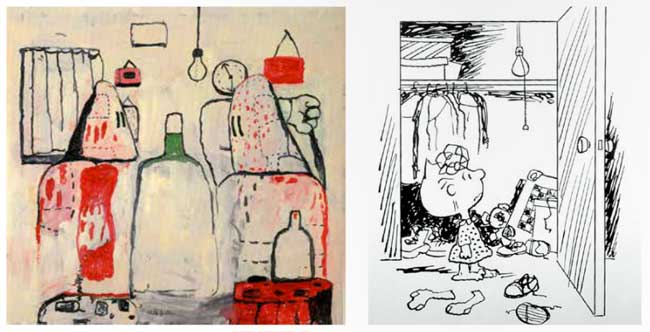
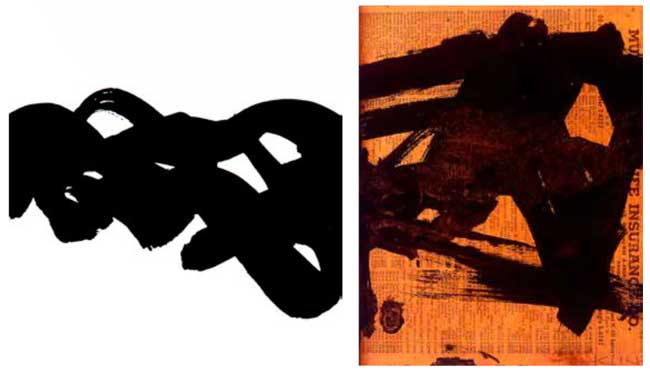
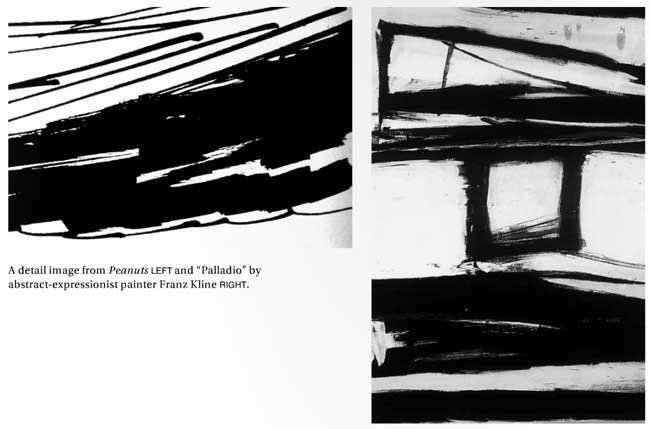
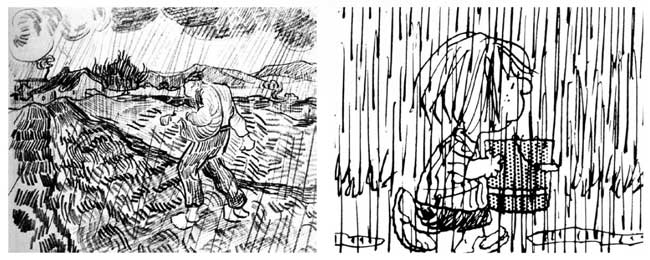
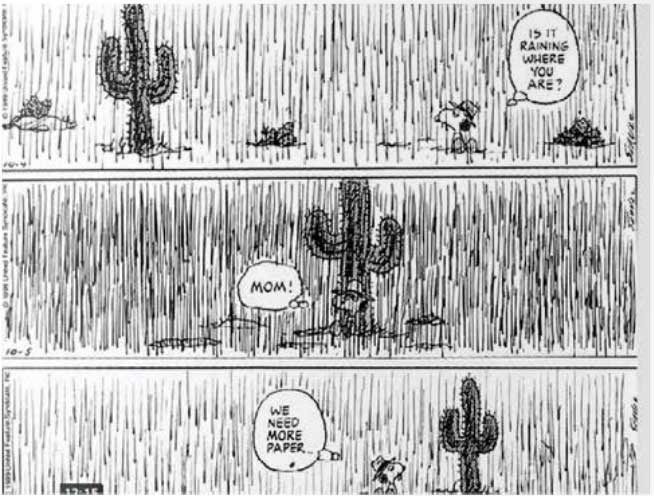
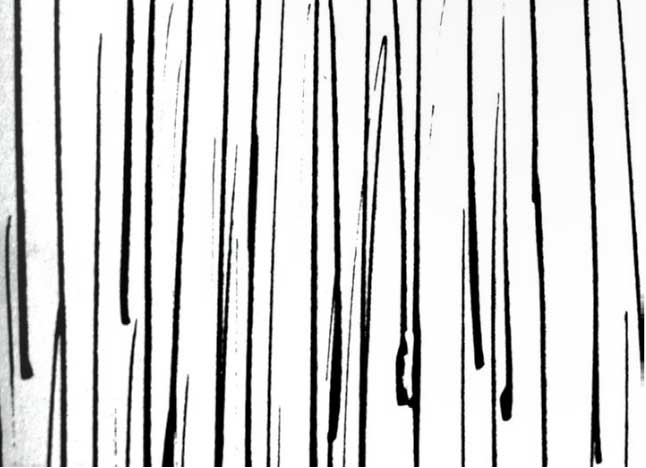
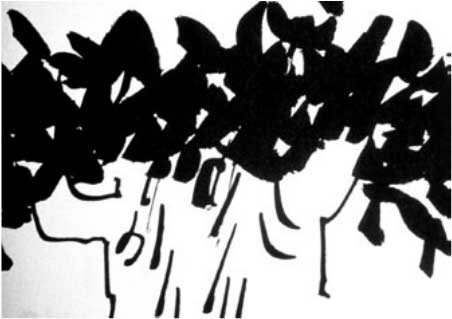
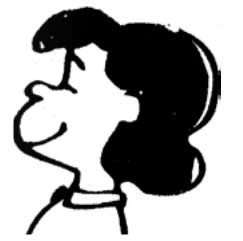 Exhibit D: Schulz developed a distinctive wavy-line effect that added incredible visual interest.
Exhibit D: Schulz developed a distinctive wavy-line effect that added incredible visual interest. 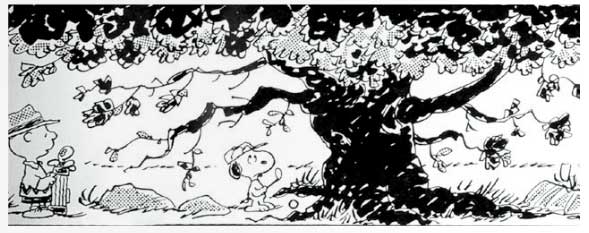 Exhibit E: Schulz believed the best line work incorporated lots of light.
Exhibit E: Schulz believed the best line work incorporated lots of light. 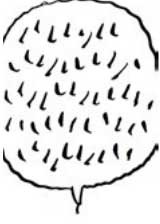 Exhibit F: Schulz was able to explain complex ideas, such as time and space.
Exhibit F: Schulz was able to explain complex ideas, such as time and space. 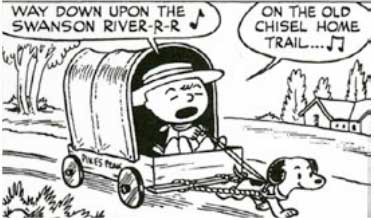 Exhibit G: Schulz toyed with the artistic feel of his strip to such a degree that the earliest panels are virtually unrecognizable as Peanuts.
Exhibit G: Schulz toyed with the artistic feel of his strip to such a degree that the earliest panels are virtually unrecognizable as Peanuts. 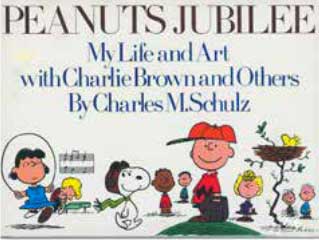 Exhibit H: Toward the end of his life, Schulz became a little more frank.
Exhibit H: Toward the end of his life, Schulz became a little more frank. 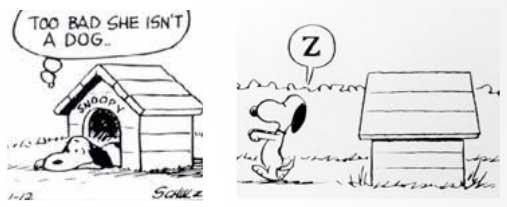 He removed spatial depth.
He removed spatial depth.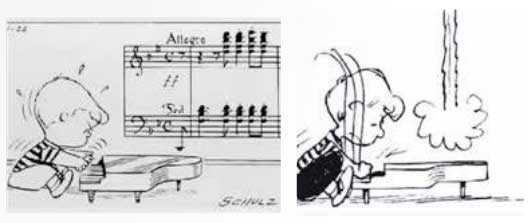 He clarified his backgrounds.
He clarified his backgrounds.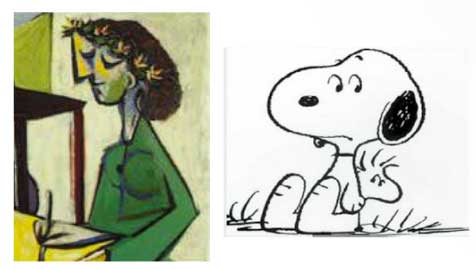 He Picasso-ified his characters.
He Picasso-ified his characters. 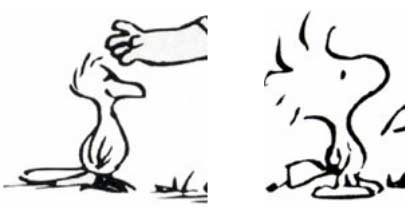 He stripped each character down to its most essential, expressive self.
He stripped each character down to its most essential, expressive self. 